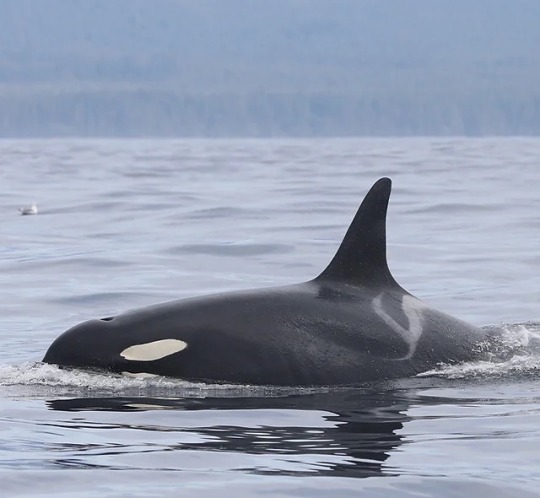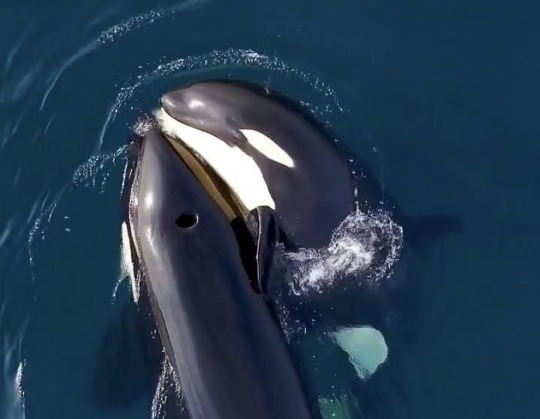#ghosteorca facts
Explore tagged Tumblr posts
Text

Orca’s distinct black and white color is actually one of the many features that make them the apex predators of the sea. The pattern and coloring serves as a type of camouflage to prey! The light coloring of their stomachs makes the whale hard to see from below, and the dark coloring make them hard to see from above.
116 notes
·
View notes
Text

The light white or gray coloring on an orcas back behind its dorsal fin is called a saddle patch. Each orca is individually identifiable, because just like human finger prints each saddle patch is unique to that orca!
64 notes
·
View notes
Text


While most people think of North Atlantic type 1 orcas (right image) when thinking of an orca, their are orcas in Antarctica that have a yellow coloration! This is because of a type of algae on their skin called diatoms. The orcas with the yellow coloration are the large type B orcas (left image).
80 notes
·
View notes
Text

Orcas are very affectionate creatures and display the similar personalities and levels of affection as humans or chimpanzees! (This was found through a research published the Journal of Comparative Psychology.) Some speculate the personality traits of playful, stubbornness, sensitivity, and protectiveness may come from the fact that orca pods are very close, and these are needed to form complex social interactions. Orca pods have also been known to cuddle in what is formally known as a cuddle puddle! It is also speculated that orcas can feel complex emotions that isn’t observed in most animals such as grief for their lost ones.
Overall orcas are very sociable affectionate creatures when it comes to their pod. This could be because the pod is their family, as younger orcas stay with their mothers for life even after having children of their own. Even elder female orcas, or grandma orcas, stay with their pod to train and watch over young ones. Orcas are also one of the animals to live decades past menopause, (the other animals being humans and short-finned pilot whales) this is an evolutionary benefit that comes so orcas can make sure their next of kin stay alive and have all the hunting skills they need to keep their own pod alive one day.
Orcas have a sweet and beautiful love for their pod, doing anything and everything to keep them alive! While I don’t usually insert my own opinions I think it’s adorable, and I think we should use the term cuddle puddle more often! :3
#orca#orcas#whales#marine life#ghosteorca facts#sealife#killer whale#I LOVE THE TERM CUDDLE PUDDLE SM
8 notes
·
View notes